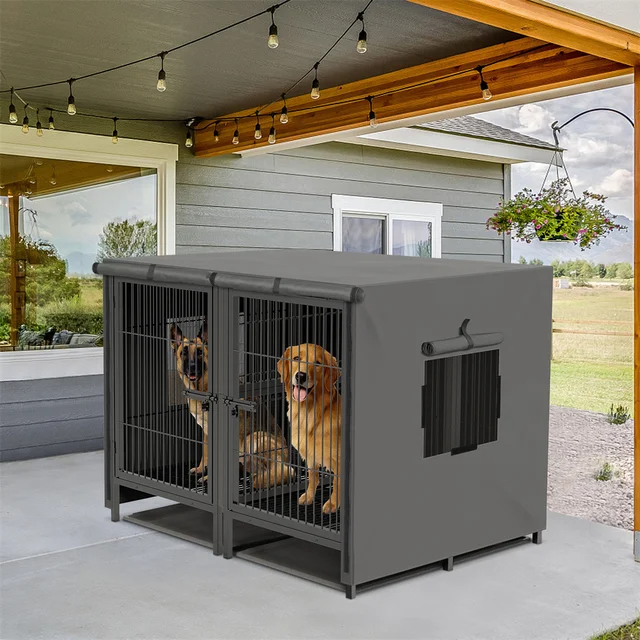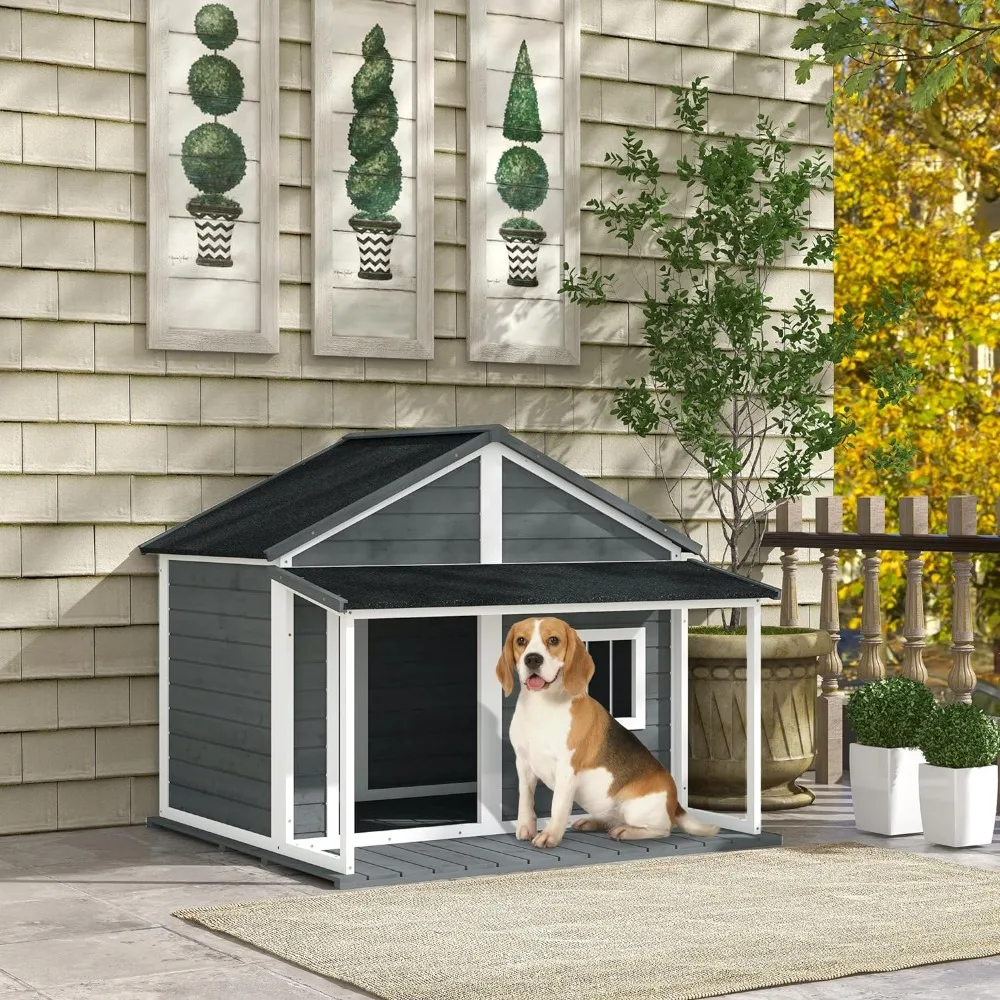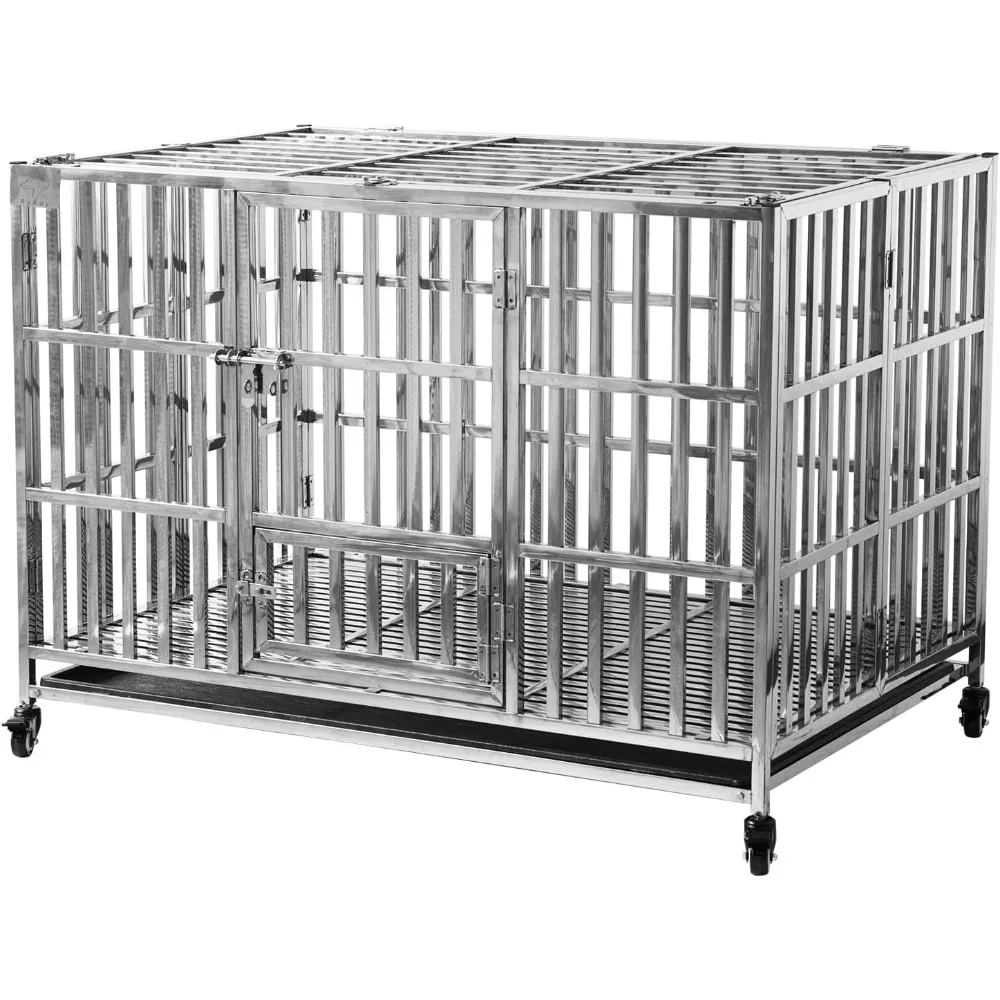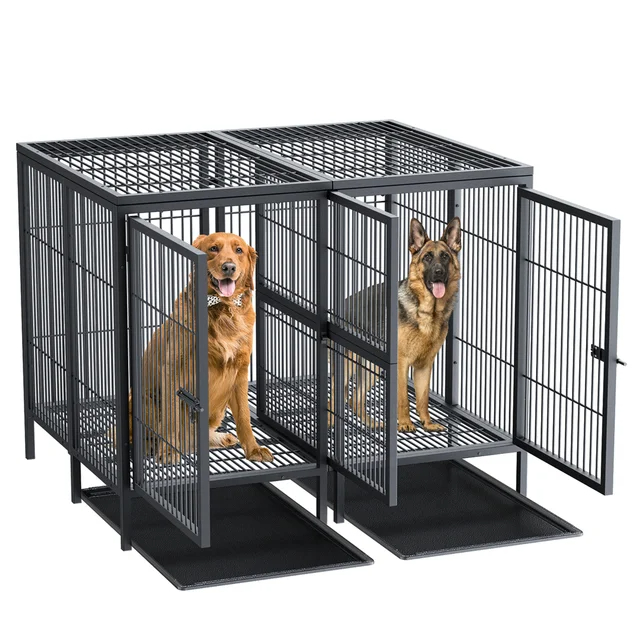When it comes to our furry friends, ensuring their safety and comfort is a top priority. One of the best ways to achieve this is by providing them with a quality kennel. A kennel is not just a simple enclosure. It serves multiple functions such as creating a safe space and providing training opportunities. By understanding the different aspects of the kennel, dog owners can make informed choices that benefit both their pets and themselves.

Understanding Kennels: A Safe Haven for Dogs
What is a Kennel?
A kennel is an enclosed structure that provides shelter for dogs. They come in various shapes, sizes, and materials. The most common types include indoor kennels, outdoor kennels, and transport kennels. A well-designed kennel should offer enough room for the dog to stand, turn around, and lie down comfortably. It should also have proper ventilation for air circulation and can be easily cleaned.
Different Types of Kennels
Indoor Kennels
Indoor kennels are typically used in homes. They offer a secure and confined space for dogs, especially when the owners are away. These kennels can be made of plastic, fabric, or metal. Some owners choose wire crates for easy visibility and airflow. The main advantage of indoor kennels is that they help manage behavior by providing a designated space for the dog, reducing anxiety during thunderstorms or fireworks.
Outdoor Kennels
Outdoor kennels are more spacious. They often come with fencing and usually have an enclosed area for the dog to roam. These structures can be permanent or temporary, depending on the owner’s needs. The main advantage is that they allow dogs to enjoy the outdoors safely. Properly constructed outdoor kennels protect dogs from the elements and prevent them from escaping.
Transport Kennels
Transport kennels are portable and are used primarily for travel. They are designed to keep pets safe while on the road, whether in a car or during air travel. These kennels should be sturdy and ventilated. They also need to comply with specific regulations, especially when flying. Owners must ensure their pets are comfortable, as travel can be stressful for animals.

Choosing the Right Kennel: Factors to Consider
Size Matters
One of the most crucial aspects of choosing a kennel is sizing. The kennel must be spacious enough for the dog to move around but not so large that it feels less secure. For example, a puppy may need a different kennel than an adult dog. The size should also be based on the breed. Small breeds can fit in smaller spaces, while larger breeds require more room.
Material Selection
The material of the kennel also plays a significant role in its function. Metal kennels are durable and often used for outdoor spaces. They withstand varying weather and are easy to clean. Plastic kennels, while lighter and generally more portable, might not offer the same durability but can still provide comfort. Fabric kennels are often used for temporary needs and are lightweight, but they may not offer the best durability.
Ventilation and Insulation
Good ventilation is key to a dog’s comfort. A kennel should allow for proper airflow, particularly in warmer months. Insulation is also an essential factor for outdoor kennels. Dogs can suffer from extreme weather, so ensuring that the kennel is protected and insulated helps keep them safe and comfortable.
Training Your Dog to Use a Kennel
The Importance of Kennel Training
Kennel training is a valuable skill for both dogs and their owners. It helps dogs learn about boundaries and safety. A well-trained dog views the kennel as a safe space. This leads to reduced anxiety and better overall behavior. Additionally, if a dog knows its designated area, it becomes easier to manage during stressful situations.
How to Start Training
Begin by introducing the kennel to your dog. Place it in a common area where the family spends time. Encourage your dog to explore it. Use treats and toys to make it appealing. Open the door and let your dog enter willingly. Never force them inside, as this can create fear. Once they are comfortable, start closing the door for short periods. Gradually increase the time your dog spends inside the kennel.
Creating a Positive Environment
Make the kennel inviting by adding a comfortable bed and favorite toys. The goal is to create a positive association with the space. Spend time near the kennel while your dog is inside, so they understand it’s a safe and happy place. Positive reinforcement goes a long way in helping your dog feel secure.
Health and Safety Considerations
Keeping Your Kennel Clean
A clean kennel is crucial for your dog’s health. Regularly clean the space to eliminate odors and bacteria. Use pet-safe cleaning products. Remove waste promptly and wash bedding frequently. This helps in preventing illness, parasites, and other health issues.
Health Checks for Your Dog
Regular check-ups with a vet are important to keep your dog healthy. Vaccination and parasite control should also be part of routine care. This ensures they remain healthy while using the kennel. If your dog shows signs of stress or anxiety while in the kennel, consult a veterinarian. There may be underlying issues that need to be addressed.

Expanding Your Knowledge
Resources and Support
As a dog owner, continuous learning is essential. Books, online forums, and local pet shops often offer valuable information on best practices for kennels. Joining a local dog group or club can provide additional insights and shared experiences. Networking with other pet owners can help you implement better care methods and enhance your dog’s well-being.
Professional Help
If you’re uncertain about kennel training or how to create a positive environment, consider hiring a professional trainer. They can provide tailored advice based on your dog’s needs. Training doesn’t just benefit your pet; it strengthens the bond between you and your furry friend.
Understanding Kennels
What Is a Kennel?
A kennel is a specialized facility designed to house pets, especially dogs, when their owners are not available to care for them. These facilities offer a safe and secure environment where pets can stay temporarily or for extended periods. Kennels are equipped to meet various needs, including feeding, exercise, and grooming. The primary goal of a kennel is to provide a comfortable and secure space for pets, ensuring their well-being while their owners are away.
Kennels can vary widely in terms of size, amenities, and services offered. Some kennels provide basic accommodations, focusing on safety and essential care. Others offer more luxurious options, including upscale amenities such as private suites, play areas, and personalized care. Regardless of the level of service, all kennels share the common goal of keeping pets safe and well-cared-for.
Types of Kennels
Kennels come in several types, each catering to different needs and preferences. Understanding these types helps pet owners choose the most appropriate option for their pets.
- Basic Boarding Kennels: These facilities provide fundamental care for pets. They focus on safety, feeding, and exercise. Basic boarding kennels are ideal for short-term stays and offer a straightforward approach to pet care. They are often more affordable and suitable for pets that do not require specialized attention.
- Luxury Kennels: Luxury kennels offer high-end accommodations and services. These facilities provide private suites, gourmet meals, and personalized care. They often include additional amenities such as grooming services, playtime, and socialization opportunities. Luxury kennels are a good choice for pets that need extra comfort and attention.
- Specialized Kennels: Some kennels cater to specific needs, such as those for elderly pets, pets with medical conditions, or pets with special dietary requirements. These facilities are equipped to handle various health issues and provide tailored care. Specialized kennels are ideal for pets that require extra support and attention.
- Home-Based Kennels: Home-based kennels are operated out of the owner’s home. These facilities offer a more intimate environment and can provide personalized care. Home-based kennels are often preferred by pet owners looking for a more homely atmosphere for their pets. They can be particularly suitable for smaller pets or those who might be anxious in a larger facility.
Conclusion: Creating the Ideal Kennel Environment
The kennel serves as a sanctuary for dogs, providing safety and a sense of belonging. Owners must take their time to choose the right type, size, and material to meet their dog’s needs. Kennel training fosters a positive experience, and a clean environment safeguards your dog’s health. Stay informed and seek advice when necessary. Ultimately, a well-planned kennel will enhance your dog’s happiness and overall life quality.
By prioritizing the needs of our canine companions, we create a supportive environment that promotes their well-being. With the right knowledge, preparation, and care, a kennel can be more than just a space; it can be a beloved area where dogs feel safe, happy, and secure.
